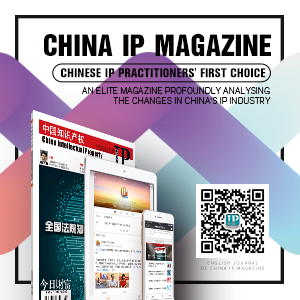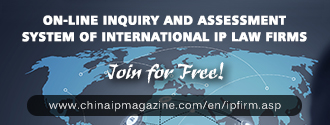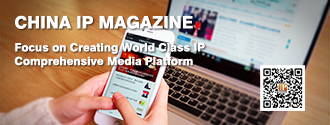Higher than 75% of Patent Invalidation Rate? The Chinese Styled Innovation Paradox Feared for New Drug Research and Development
By Jody Lu
“In recent years, invalidation cases involving innovative drug patents, including compound patents, have exhibited something inexplicable. On the one hand, drug researchers, who have developed a successful innovative drug, to the benefits of patients, after spending over 10-15 years and an average of over USD 2.6 billion in R&D, end up seeing their patent covering the drug invalidated for lack of inventiveness. On the other hand, patent challengers, who have barely developed a new drug, appear to always claim that they can easily discover an innovative drug, and be able to convince the patent reexamination board and the court on that claim.” In “2018 High-Level Forum on China IP Protection” held on April 21 this year, the concept of “the Innovation Paradox of Innovator Drugs” was firstly put forward by Xu Feng, the manager of Intellectual Property Department of AstraZeneca (China) Co., Ltd. His rather intense and thought provoking remarks immediately triggered a hot discussion among the attendees at the presence of some judges and officials from relevant departments of Patent Office.
Shortly after these remarks, the China IP reporter interviewed Xu Feng, an overseas returnee who had been a practicing patent lawyer in the United States in the pharmaceutical field of the for over a decade. Before the interview, he showed the reporter a spreadsheet on the invalidation rate of innovator drug patents in China. The spreadsheet looks straightforward and the preparation method is not complicated, i.e., it just statistically summarizes the invalidated patents involving innovator drugs published on the official website of the re-examination board. However, the reporter was surprised at the conclusion that the invalidated innovator drug patents accounted for more than 75% and the percentage of invalidated compound patents is greater than 50%. The spreadsheet may not necessarily reflect wholly the actual situations, since the website of the re-examination board has not published all relevant cases before 2015. Nevertheless, to the surprise of the reporter, domestic and overseas pharmaceutical companies, lawyers and agents generally become inured to this condition in the subsequent multi-interviews made by the China IP reporter with them, considering that patent invalidation cases of innovator drugs including compounds have been frequently reported in recent years.
“ Of course, generic drugs often launch a challenge to those patents which are not stable enough to become unbreakable. So, based on the data alone, it cannot be directly concluded that the re-examination board holds a negative attitude towards compound patents.” An anonymous patent director (hereinafter referred to as Mr. A) from one of Top 10 domestic pharmaceutical companies told the China IP reporter. “The situation is really not optimistic in China. When a compound patent cannot be supported by sufficient experimental data, the patent status will become very unstable, which rarely happens in other countries.”
In the last May, the approval of two firstclass new drugs, i.e. Pegfilgrastim of Hengrui Medicine and Anlotinib Hydrochloride Capsules of CP Pharmaceutical Group, has once again given the industry a glimpse of dawn in the development of China’s innovator drugs. When a large number of new drugs are developed one after another by domestic pharmaceutical companies in the future, it may no longer be just the voice of overseas-funded pharmaceutical companies to stimulate pharmaceutical innovation through patents. In the interview, Cheng Fang, a partner of Zhonglun Law Firm, said: “High invalidation rate of compounds after substantive examination is not conducive to benefit balance of the patent system and the efficient operation of the entire system. In the long run, the patentees will be discouraged, which are not conducive to stimulating innovation.”
Increasingly strict patent invalidation examination of innovator drugs
After analyzing the statistical datasheet mentioned above, the China IP reporter found that the percentage of the invalidated compound patents to the invalidated innovator drug patents began to rise after 2014, as these patents were deemed not to conform to the inventiveness requirements as specified in Paragraph 3 of Article 22 of the Patent Law. Before 2014, two invalidation examination cases were filed against compound patents, of which one was invalidated. The number of invalidation examination cases of compound patents increased to 9 within four years from 2014 to 2018, of which 5 patents were invalidated and 4 patents remained valid for the amended claims, with an invalidation rate of more than 50%. According to Xu Feng, as the most core patent in pharmaceutical R&D innovation, the patent about medicine and active ingredient itself is rarely invalidated in European and US. “In my career as a patent attorney for ten years in the United States, I knew only one case in which a compound patent was invalidated,” said Xu Feng.
On October 17, 2017, the patent reexamination board made an invalidation decision on patent No. 33591, which announced that the ticagrelor compound invention patent (99815926.3) as a blood platelet anticoagulant developed by AstraZeneca was completely invalid for lack of inventiveness. According to Xu Feng, as a key core patent of ticagrelor, the patents in the family corresponding to the compound invention patent have been recognized and protected in more than 50 countries across the world. In 2017, ticagrelor is on the National Reimbursement List and achieved a global sale of over 1 billion USD. The huge market temptation has given rise to patent challenges by rivals. The patent validity of Ticagrelor has been maintained in Korea after being challenged by 12 generic drug companies, and also in the United States after the re-examination procedure. “However, only in China the compound patent has been invalidated. In terms of the validation judgment over the similar or even the same patent, China’s decision is diametrically opposed to those in other countries, although the analysis of inventiveness in China is on its face similar to that in the United States,” said Xu Feng.
In addition to compound patents, secondary pharmaceutical patents such as crystal forms, preparations and preparation methods also encounter such “high criteria”in recent years. In the interview, Wu Hesong, the intellectual property director of Jiangsu Chia Tai Fenghai Pharmaceutical Co., Ltd., told the China IP reporter, “In the past, a new crystal form could be given a patent with the consideration of the unpredictability of crystal form, which was not required to be supported by too many experiments with unexpected technical effects compared with the prior art. However, recent cases show that a crystal form is either difficult to obtain a patent in application or the patent is easily invalidated.” Mr. A said bluntly that there’s no way to go for a crystal form patent, unless the specification provides enough data to prove that it made a breakthrough. “Based on the cases in recent years, no crystal form patent can meet the standard and requirements of China’s patent re-examination board.”
In fact, the China IP reporter found it is the consensus of domestic pharmaceutical companies that the examination standard in China is more stringent than that in Europe and the United States. Moreover, the patent invalidation procedure indicates a very strict examination standard in terms of inventiveness. Liu Hui, the intellectual property director of WuXi AppTec, told the reporter that “Such a high standard may be conducive to the development of generic drugs and has positive significance in a specific period of time. However, in view of ever-changing new drug R&D trend in recent years, most domestic enterprises gradually engage in new drug R&D and innovator drugs are not dominated by foreign enterprise anymore.” He said that a large number of biotech companies have sprung up in China on a mission to develop new drugs; some powerful generic drug companies have also begun to make a massive transformation to new drug R&D, which has further boosted the upsurge of new drug R&D in China; meanwhile, some platforms specialized in providing integrated new drug R&D services take VIC model to a new level. “In compound design, these enterprises have taken the patentability as a rigid index to evaluate whether a compound can be used as a medicine, that is, ‘No Patent, No Drug’,” said Liu Hui. “The R&D of new drugs is often a near touch for domestic enterprises, and requires strong patent protection from the government.”
It is worth mentioning that, from the perspective of the drug administration system, the government has frequently expressed a willingness to protect innovator drugs in the recent two years. For example, China Food and Drug Administration, General Office of the Central Committee, and General Office of the State Council distributed two documents, stating that a drug patent link system will be established. On April 12, 2018, the premier Li Keqiang also announced at the executive meeting of the State Council, “Innovator chemical drugs will be provided with a data protection period of up to six years, and the application of the same variety will not be approved within this period. If innovator drugs are listed simultaneously at home and abroad, a patent term up to five years will be given as compensation.” The introduction of the data protection system and the extension of the patent term have once again demonstrated China’s strong support for drug innovation. “It is believed that the three policies can further promote the development of China’s innovator drugs. However, a key point lies in that a patent may lack stability and predictability if it can be easily invalidated. Thus, patent links, patent extensions and other institutional benefits based on patent validity may just become an empty talk.” Mr. A emphasized.
The foreign-funded pharmaceutical companies have reason to worry about this. In the era of innovation, if most Chinese pharmaceutical companies can still strive to survive, the foreign companies are already targeted at by almost all patent challenges. Wu Hesong analyzed that “Any drug patent has a value of market potential. The larger the value is, the greater the motive for invalidation will be. At present, foreign enterprises dominate the innovator drug patents, and thus they are attacked frequently. As the drug patent link system is introduced in China, the first enterprise to successfully challenge a patent can still obtain a certain market exclusivity period, which means that highly valuable patents are challenged with larger possibility.” It can be predicted that the foreign-funded pharmaceutical companies may face more patent challenges in the future. Then, will such foreign-funded pharmaceutical companies under pressure adjust their strategy in China?
“China has a very large market. There is no doubt that foreign companies are very keen for introducing new drugs into China as soon as possible, but they have to consider the IP protection environment in China. In fact, China always turns to be the second or the third market of new drugs, no matter they are micromolecular drugs or emerging macromolecular drugs. The first market is usually Europe and the United States where intellectual property is strongly protected,”said Xu Feng. “In addition to the introduction of new drugs, IP is also a very important consideration for foreign companies when it comes to key decisions such as setting up R&D centers and factories in China.” In recent two years, the foreign-funded pharmaceutical companies have frequently withdrawn their R&D centers in China. For example, some large pharmaceutical companies such as Abbvie, GlaxoSmithKline, Eli Lilly and GE have already shut down their R&D centers in China one after another. The China IP reporter found that the “Withdrawal Tide” of foreign-funded pharmaceutical companies is caused by many complicated reasons, but “China’s intellectual property environment will indeed directly affect those R&D projects facing the Chinese market.”
Besides, the “win-win cooperation” has also become an important strategy for the foreign-funded pharmaceutical companies and the local drug companies to achieve win-win results. In recent years, Pfizer, Roche, Eli Lilly, AstraZeneca and other pharmaceutical giants have strengthened their R&D and authorized cooperation with domestic pharmaceutical companies in innovator drugs. “In a good intellectual property environment, the foreign pharmaceutical enterprises and the local pharmaceutical enterprises will cooperate with each other more frequently in the further, on the premise of respecting each other’s intellectual property rights.” Xu Feng said.
Dissension outweighs consensus in supplementary experimental data
“Based on current examination practices, inventiveness is a frequently cited reason to reject the patent applications or invalidate patents. Examiners also take higher standards in practices,” said Wu Hesong, “Further analysis on the inventiveness cited as reason indicates that the specification failed to provide sufficient experimental data.”
It is very important to supplement experimental data as further proof of patent inventiveness. When an examiner believes that the claims lack inventiveness, the patent applicant can prove that the claims have outstanding effect relative to the prior art by supplementing experimental data, and thus has inventiveness. In 2017, State Intellectual Property Office revised the Patent Examination Guidelines, which clarifies that “the examiner shall examine the experimental data supplemented after the application date”, and deleted the content in the last edition that “the experimental data submitted after the application date shall not be considered.”Liu Qinghui, a former judge of the Beijing Higher People’s Court (BHPC) and an immediate partner of Beijing Anjie Law Firm, told the reporter that “it is very rare in practices to accept the experimental data supplemented by the parties involved,”and the reason lies in that such acceptance will shake the root of first-to-file principle adopted by China.
In the interview, Liu Qinghui cited two cases tried by BHPC and concluded that BHPC adopts the experimental data supplemented by the parties concerned on the premise of not introducing new technical content or not breaking the first-tofile principle. The specific requirements are as follows: the supplementary experimental data are obtained by the experimental method before the application date of the patent concerned; and the proved technical effect is as documented in the specification of original patent application clearly.
However, there is a widespread recognition in pharmaceutical companies that such acceptance standard has been unscrupulously interpreted and applied, thus causing the supplementary experimental data of pharmaceutical companies not to be considered in most cases. Liu Hui believed that such rejection actually requires the applicant to complete all tests before applying for a patent. This kind of orientation has not only increased the decision-making cost of obtaining new drug patents, but also narrowed the followup window of generic drugs. The intense competition in new drug R&D and the limited space for compound design make it possible to clash in such R&D, which means that a pre-emptive patent layout strategy is the key for enterprises to win such competition. “The applicant will have to give up the market if he dares not apply for a patent when he does not obtain all data for a patent grant in his opinion, although necessary data have been obtained ahead of the competitor. In such cases, the decision-making cost is undoubtedly too high. The patent application on the basis of all tests will prolong the actual patent term of innovator drugs and is not conducive to technology promotion and follow-up of generic drugs,” Liu Hui said.
It is worth mentioning that according to Liu Qinghui, China’s Supreme People’s Court (SPC) has become relatively tolerant in the past two relevant judgments regarding the admissibility of experimental data submitted by the parties concerned. On June 1, 2018, SPC issued Opinions on Several Issues Concerning the Trial of Administrative Cases Involving Patent Licensing and Confirmation (Draft for Comments), of which Article 13 provides that, “The people’s court should generally hear the case, if the applicant and the patentee of a patent for chemical invention submit experimental data after the application date to further prove that the technical effects described in the specification have been fully disclosed, and the technical effects can be confirmed by those skilled in the art according to the specification, drawings and general common knowledge on the application date. Meanwhile, the people’s court should generally hear the case, if the applicant and the patentee of a patent for chemical invention submit experimental data after the application date to prove that the patent application or the patent has technical effects different from the reference documents, and the technical effects may be directly and undoubtedly confirmed by those skilled in the art according to the content disclosed in the patent application documents on the application date.” However, Liu Qinghui believes that the standard set by the Draft for Comments is too strict to promote the development of innovative pharmaceutical enterprises.
For Liu Qinghui, “SPC’s original intent is to adopt relatively strict examination standards for experimental data supplemented by the parties involved according to Paragraph 3 of Article 26 of the Patent Law, and to adopt relatively loose examination standards for experimental data supplemented by the parties involved according to Paragraph 3 of Article 22 of the Patent Law. Based on Article 13 of the Draft for Comments, the examination standard in Paragraph 2 is stricter than that in Paragraph 1, which may be a kind of misrepresentation rather than the original intent of SPC.”
In Europe and the United States, relatively loose standards are formulated to accept the supplementary experimental data. According to Mr. A based on current international practices, these countries usually allow the supplementary experimental data to be used as supplementary evidence, and the examining authority will consider whether these data can further prove the patentability of the invention. “However, such practices hardly work in China. It is very difficult to admit our data as long as they are not documented in the specification.” Mr. A reluctantly pointed out, “The drug development period is very long and often takes more than ten years. In fact, many data cannot be obtained at the time of patent application. That is, data indispensable for maintaining patentability at a later stage will not be recorded in the original patent specification.” Xu Feng also pointed out that, in practices, the supplementary experimental data are mainly compared with the closest prior art specified by the re-examination board; however, the closest prior art is often put forward in the patent invalidation procedure, “which cannot be known by the patentee in advance when applying for a patent.”
Therefore, Liu Qinghui believes it is necessary to avoid rigid understanding of the first-to-file principle or rejection of the supplementary experimental data on the grounds that technical effects proved by the supplementary experimental data are not clarified in the original specification and thus are deemed to belong to new technical content. As long as the technical effects proved by the supplementary experimental data can be clearly obtained or deduced by those skilled in the art according to the knowledge and ability on the application date, and the content disclosed in the original specification (including those explicitly disclosed or implicitly disclosed), such data should be considered, and this will not undermine the first-to-file principle.
Liu Qinghui said, “as we all know, the pharmaceutical innovation cost is generally very high. To effectively protect innovation, we shall not set too strict requirements for medical patent rights nor too high standards on the disclosed technical effects and supplementary experimental data. It is of positive significance for the protection of medical invention by granting patent right or maintaining patent’s validation if a relatively loose and reasonable standard on supplementary experimental data can be adopted in which the parties involved are allowed to supplement such data to prove relevant technical effects and eliminate the examiner’s doubts on the technology.”
Should the inventiveness examination be conducted in an overall view?
How difficult is it to develop a new drug?
According to a research report made by Tufts Durg Development Center, a new innovator prescription drug has increased its total cost to 2.6 billion USD from development to approval in recent years, and generally takes at least 10-17 years or more from early research and development to approval for marketing. Compared with the 20-year patent protection duration, the development time seems very long.
In the early exploration stage of new drug R&D, it is often required to design, synthesize and test 5000-10000 compounds around biological targets, and only one of them, with some luck, can become a new drug to the utmost. This process is usually carried out in the laboratory and usually takes 3 - 6 years. The following phase I, phase II and phase III clinical tests will take at least 6-7 years or even longer. However, despite the early success, many new drugs still may end in failure in phase III clinical practices. Until then, developers may have invested hundreds of millions of dollars and a dozen years of painstaking efforts. Xu Feng told the reporter, “developing a new drug is like looking for a needle in a haystack. There is extremely low possibility to find a drug with very good efficacy and having no high toxicity and side effects. Developers not only need to invest time, energy and money, but also rely on the luck sometimes.”
Based on the patent invalidation cases in recent years, the lack of inventiveness is often the ground for invalidation of innovator drug patents. It is reported that the challenger usually provides a reference document (usually the patent applied for by the same patentee in the early stage of study), argues that those skilled in the art can obtain the invention by modifying or substituting certain function groups of the “closest prior art”disclosed in the reference document, and finally concludes that the invention is apparent in view of the technology in the reference document. In Xu Feng’s view, such analysis often uses and even relies on hindsight. “It is very ‘easy’ to infer an answer from the known information after knowing the answer.” According to him, in order to avoid such hindsight analysis, in cases involving the inventiveness of drug molecules in U.S. courts, patent challengers often need to answer the following questions: Firstly, among a large number of known compounds in the reference document, why would those of ordinary skill in the art have chosen one particular compound of these compounds as the starting point for solving the problem? Secondly, the compound chosen as a starting point has many positions for modification and many functional groups as potential modifying groups, why would those of ordinary skill in the art have selected only one particular combinationsfrom so many possible combinations? Finally, the challenger has to explain whether those of ordinary skill in the art can reasonably expect the modified compound to have a relevant property. Xu Feng told the China IP reporter: “If the patent challenger can’t answer these questions in a ‘clear and convincing’ way, he fails to establish that the compounds lack inventiveness.”
In addition, Cheng Fang also shared her practical experience in terms of inventiveness examination in the United States. According to her, the inventiveness requirements stipulated by China’s patent law can usually correspond to the nonobviousness concept under US patent law. The US Supreme Court established a nonobviousness judgment method in its trial of Graham case in 1966 and introduced relevant auxiliary judgment criteria, such as commercial success, solving longterm technical problems, success after overcoming difficulties faced by others, winning acclaim from the industry and being copied by competitors, which can be used to illustrate the non-obviousness of an invention. Cheng Fang said, “a comparison in terms of judicial practices in this regard between China and the United States shows that the United States attaches great importance to the auxiliary judgment criteria such as achieving business success and solving long-term outstanding technical problems, whereas China in practice has rare case to make judgment by directly relying on such auxiliary judgment criteria.”
“The determination of inventiveness in other countries often involves a comprehensive consideration of many sorts of objective evidence. By comparison, the method for determining inventiveness is relatively mechanical and simple in China. The determination of inventiveness, which involves a rich social context as well as scientific and technical research background & ramifications, is often made in isolation and reduced into a simple inquiry of ‘whether the specification includes relevant data’.” Xu Feng sharply pointed out that the inventiveness issue of any new drug is by no means a simple legal or technical issue. To meet the needs in human health care areas, such an issue should be placed into a larger social framework.











